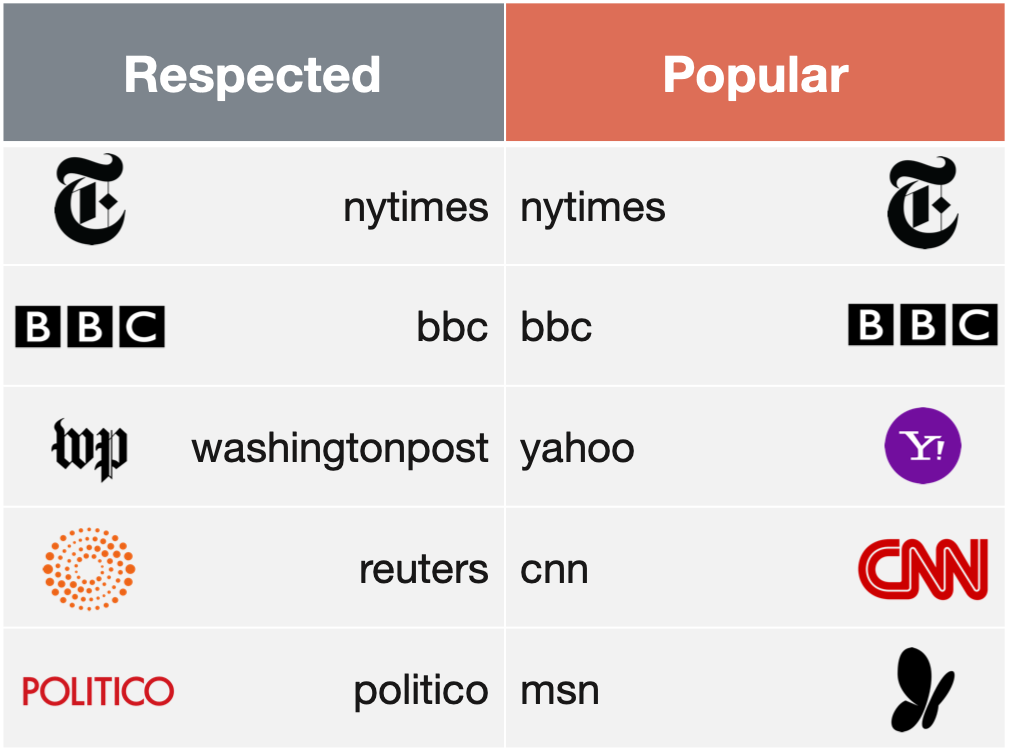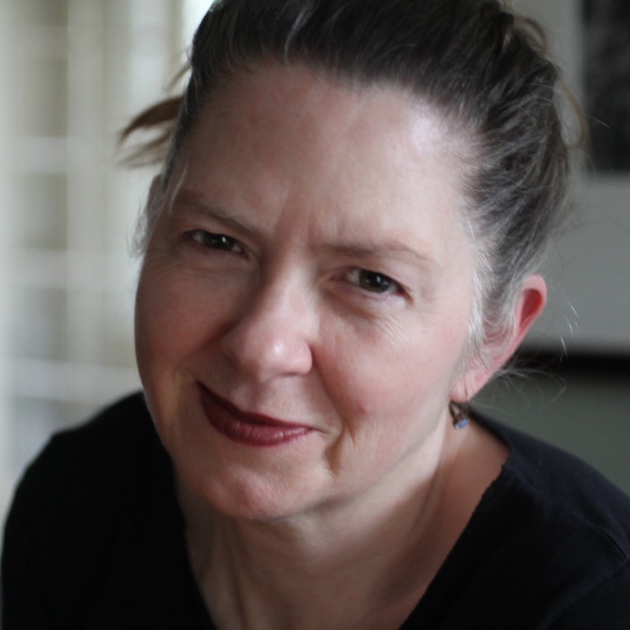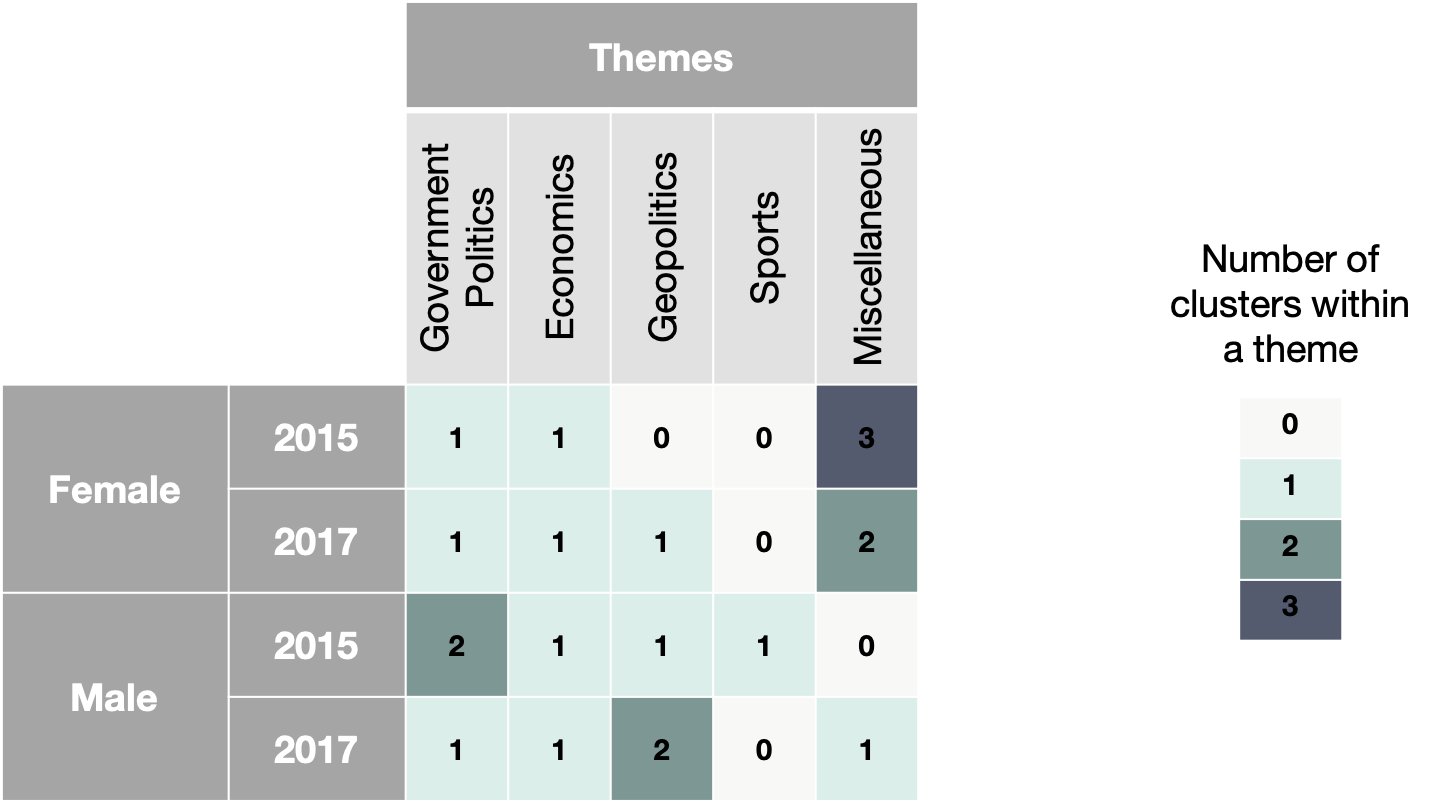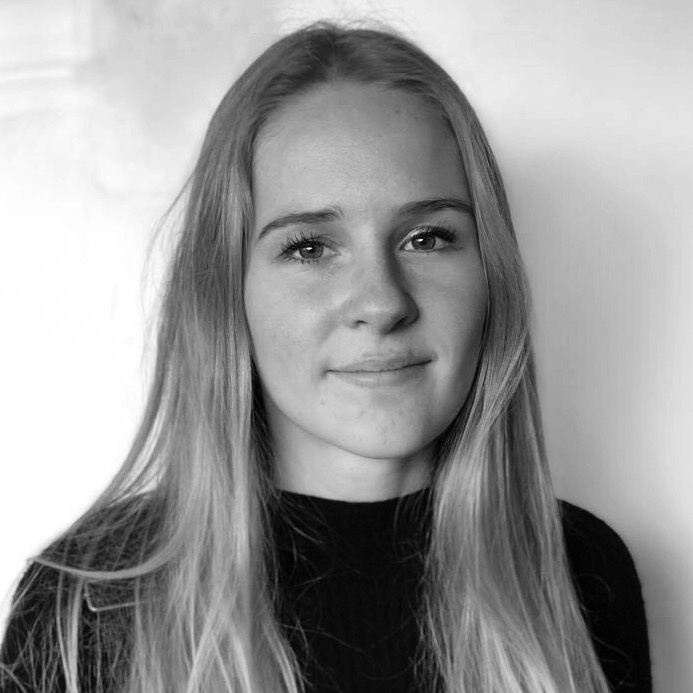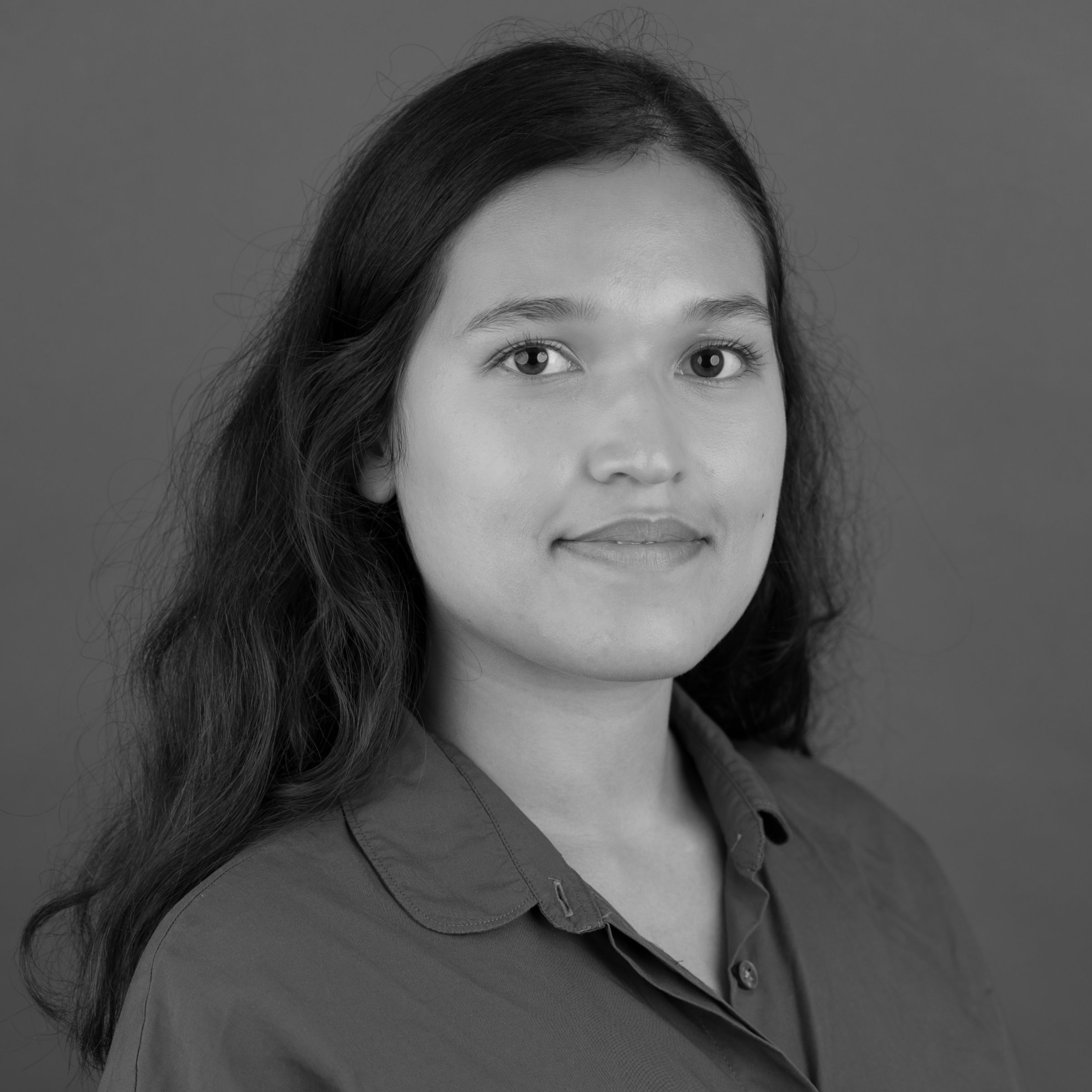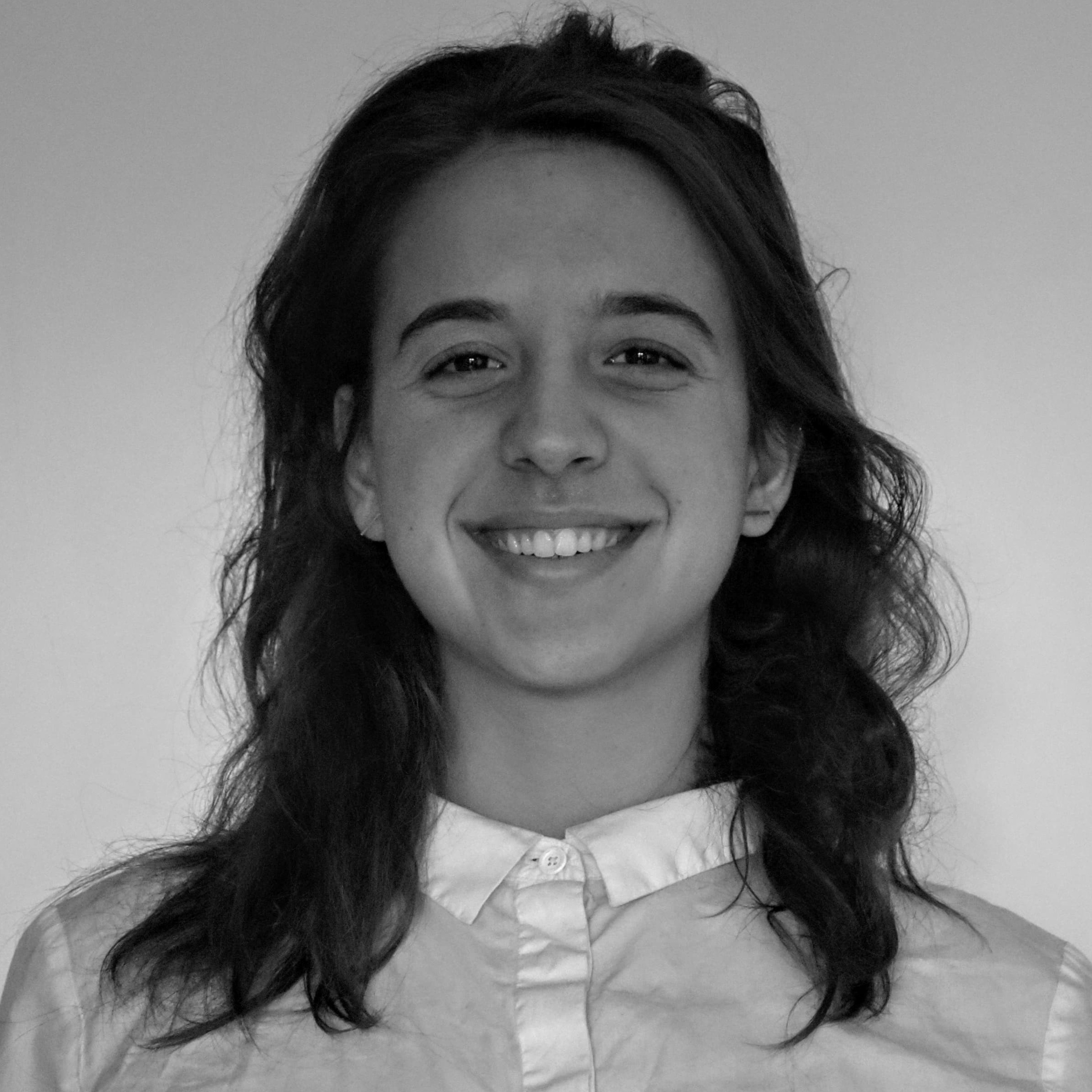"Improving diversity and pluralism in the media also means providing greater opportunities for people."
- UNESCO, 2019
With gender equality being raised in a wide variety of domains, a data-backed analysis can help our society understand its current position and the steps it needs to take to improve. This project aims at analysing the status of females through the lens of media.
By using the Quotebank dataset, a corpus of english quotations from a decade of news, the project provides insights on how gender is represented. The data in this project covers quotes published between 2015 and 2020. The site names at the origin of the quotes were extracted from the URLs of the article, which was provided in the original dataset. Based on this list, which uses Google Page Rank and other independent web metrics for various search engines (more about the ranking method here), 116 sites were selected based on their web ranking scores. Only quotes whose source was within this list were kept for the study. This filtering allowed to reduce the media sources to the most known and common journals or sites.
years of data
2015 to 2020
millions of quotes in total
media countries represented
media kept
categories analysed
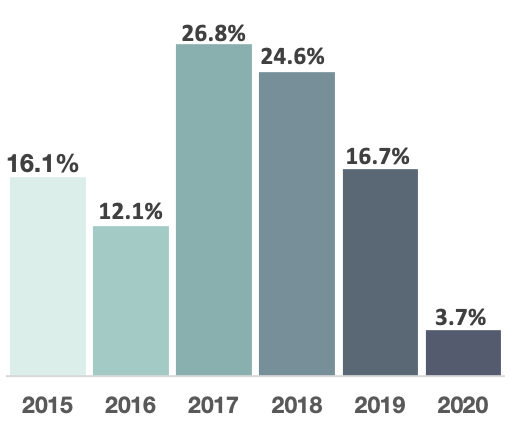
With this data, an in-depth analysis is performed to understand:
"
How does female representation in media vary in different countries?
How does female representation evolve in time?
Do different types of media sources represent females equally?
What topics are females quoted in?
"
Is gender equality in the media a universal concept?
How are females quoted around the world compared to males?
The average percentage of female quotes for each media's country of origin from 2015 to 2020 provides a preliminary glimpse into the different countries and the female representation in their respective media. At a first glance, media from France, Israel and Latvia have a low female representation compared to Germany, United Arab Emirates or Brazil. However, this note is to be taken with caution, as non-english speaking countries have only a handful of media which focus on precise categories. This induces a bias in the gender representation for those countries. To illustrate this effect, with Eurosport being one of France's only 2 media sources, this could explain the low percentage of females as sports is more mediatized for males.
English-speaking countries, on the other hand, have a greater number of media and hence cover a wider range of categories.
Interestingly, the United Kingdom has the largest propotion of female quotes compared to all other countries with 23.7%.
South Africa appears to quote, proportionally to its total number of quotes, more females than the United States. As a result, a more in-depth investigation is conducted, focusing on these three countries, in order to determine the causes of these patterns.
There is no country that quotes more females than males
Comparing female representation in 3 countries: UK, USA and South Africa
Note that the percentage of quotes per media country is 12.7%, 86.7% and 0.7% for UK, USA and South Africa respectively. For that reason, the relative numbers per countries are to be used.
What is the evolution of the percentage of female quoted accross the years?
The percentage of female quotes gradually increases for the UK, peaking at 26.8% in 2019, while it remains relatively steady in the other two countries. Surprisingly, an abrupt decrease appears in 2020. This could be in part due to the the reduced number of quotes in 2020 in the dataset.
The changes over time confirm the first perceptions about the countries: the United Kingdom, which has the greatest proportion of female quotes overall, also leads throughout the years.
South Africa has slightly higher proportions than the United States for all years but 2016. This year marked the presidential election with the famous rivalry between Donald Trump and Hillary Clinton which was omnipresent in the media. Indeed, it may be interesting to focus on the distinct speakers and their individual impact on gender representation in the media. An average for each year does not account for the diversity of quoted females, and one unique female may be very often quoted, skewing the prior analysis.
Fly over the nodes to have more info on the age and exact number of quotes
Who are the most quoted people?
The speakers are now ranked according to the number of times they were quoted. The interactive network shows the top three speakers for each country and gender. The size of a node is proportional to the number of quotes from the speaker in the country in which he or she was cited, and the colors represent gender.
For 100 female quotes, 10 originate from distinct speakers in South Africa, but only 5 and 2 for the United Kingdom and the United States of America, respectively
Here again, the unequal gender representation is unambiguous, since within each country, all the male nodes are bigger than the female nodes. Donald Trump, as former president of the United States, was present on an international scene and in many different topics. He consequently appears in the top three of all countries. The other main speakers in the USA are all politicians, with an exception for Pope Francis. The most quoted females in the USA are Hillary Clinton and Nancy Pelosi, who are both females above 70 years old. However, in the UK the most quoted female speakers tend to be celebrities or entertainment figures, such as Meghan Markle and Katie Price, who are younger females. On the other hand, all the males in the UK work in politics. In South Africa, the most prominent speakers are once again all political figures. There, the three most quoted females fall in the age range of 50-70 years old. With these results in mind, one can see how the categories as well as the age seem to determine the proportion of females within each country.
Does age determine who will be quoted?
The age distribution for both genders is displayed above, depending on the country. The distinction between countries is obvious, and the distinction between genders even more so. As one would expect, the age distribution of the males is not surprising, with most speakers belonging to the active workforce. Females, on the other hand, appear to have a different age distribution depending on the country. In South Africa, 37.8% of the females mentioned are between the ages of 60 and 70, which is comparable with the top three female distnict speakers from the prior network. In the United Kingdom, the distribution is significantly skewed towards younger females. This is also supported by the network above, with two young females appearing in the top three for the UK, contrarily to the other two countries. The top three however cannot justify these observations in the age distribution on its own. Indeed, since the proportion of distinct female speakers (see the box above) is much lower for the USA than for South Africa, one could expect Hillary Clinton and Nancy Pelosi to have a big influence on the age distribution of American females. This is however not the case. A possible explanation for this contradiction is the fact that, despite having quoted some females only, proportionally to their total number of quotes, these females are very well distributed over the age intervals. Indeed, the first and last 25% of the age distribution of American females are between 0-34 years and 62-100 respectively, with a median at 47 years old.
What are the media sources behind the quotes?
The previous analysis shows that the representation of females is influenced by the country of origin of the media. The table below shows the different media that quoted the top speakers in each of the analyzed countries. Looking at the various media leads us to dig deeper with the next part investigating the media sources classified by how reliable and how popular they are.

